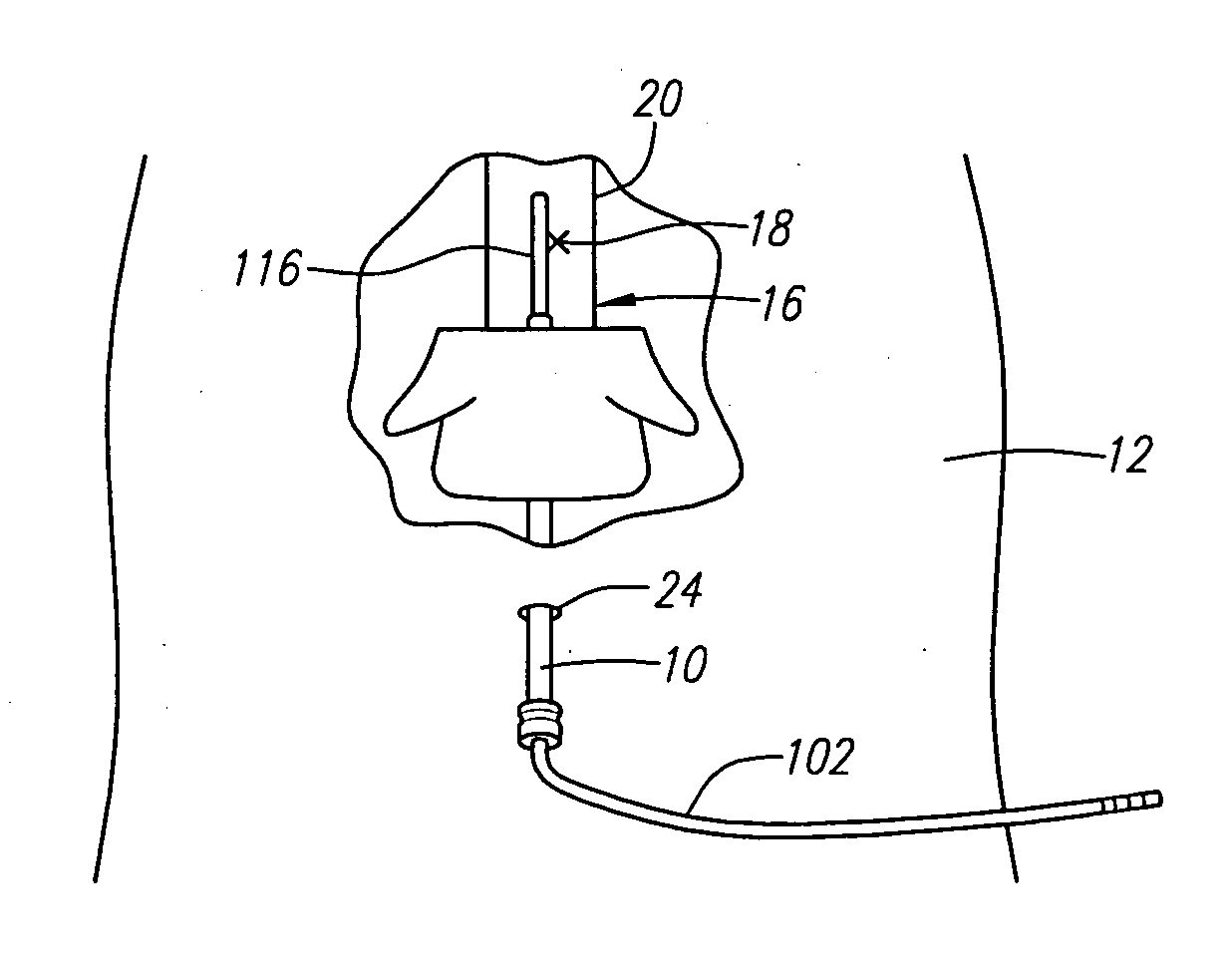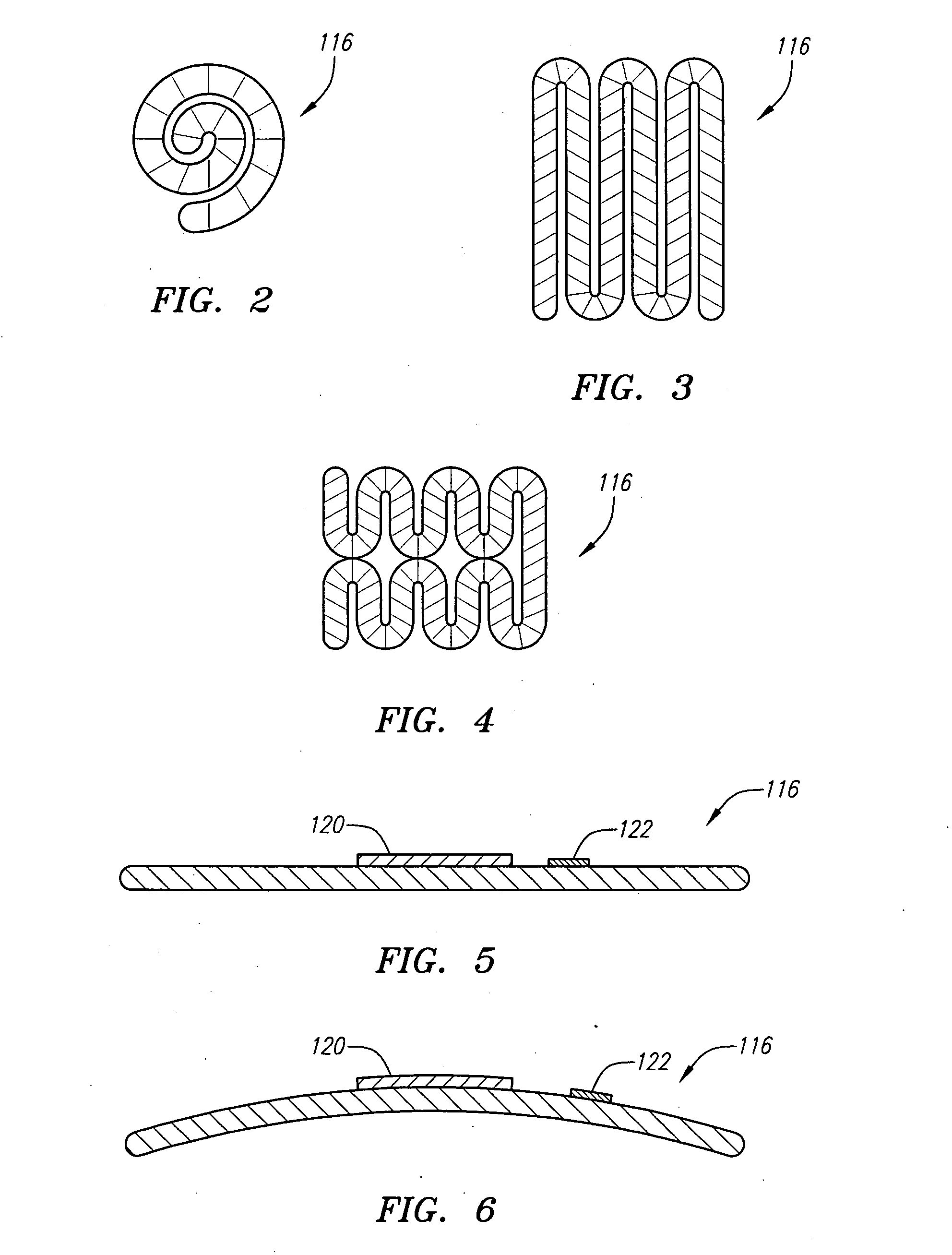Collapsible/expandable tubular electrode leads
a tubular electrode, expandable technology, applied in the direction of internal electrodes, spinal electrodes, therapy, etc., can solve the problems of lack of power efficiency, achieve the effect of reducing pain, reducing tissue displacement, and inhibiting tissue growth
- Summary
- Abstract
- Description
- Claims
- Application Information
AI Technical Summary
Benefits of technology
Problems solved by technology
Method used
Image
Examples
Embodiment Construction
[0039] Referring now to FIG. 1, a spinal cord stimulation lead kit 100 arranged in accordance with one preferred embodiment of the present invention is shown. In its simplest form, the stimulation kit 100 generally comprises a stimulation lead 102, which is configured to be percutaneously delivered and implanted into the epidural space of a patient's spine, an implantable electrical stimulation source 104 configured for delivering stimulation energy to the stimulation lead 102, and an optional extension lead 106 configured for connecting the stimulation lead 102 to the remotely implanted stimulation source 104.
[0040] It should be noted that although the kit 100 illustrated in FIG. 1 is described herein as being used in spinal cord stimulation (SCS) for the treatment of chronic pain, the kit 100, or a modification of the kit 100, can be used in an SCS procedure to treat other ailments, or can used in other applications other than SCS procedures, such as peripheral nervous system sti...
PUM
 Login to View More
Login to View More Abstract
Description
Claims
Application Information
 Login to View More
Login to View More - R&D
- Intellectual Property
- Life Sciences
- Materials
- Tech Scout
- Unparalleled Data Quality
- Higher Quality Content
- 60% Fewer Hallucinations
Browse by: Latest US Patents, China's latest patents, Technical Efficacy Thesaurus, Application Domain, Technology Topic, Popular Technical Reports.
© 2025 PatSnap. All rights reserved.Legal|Privacy policy|Modern Slavery Act Transparency Statement|Sitemap|About US| Contact US: help@patsnap.com



